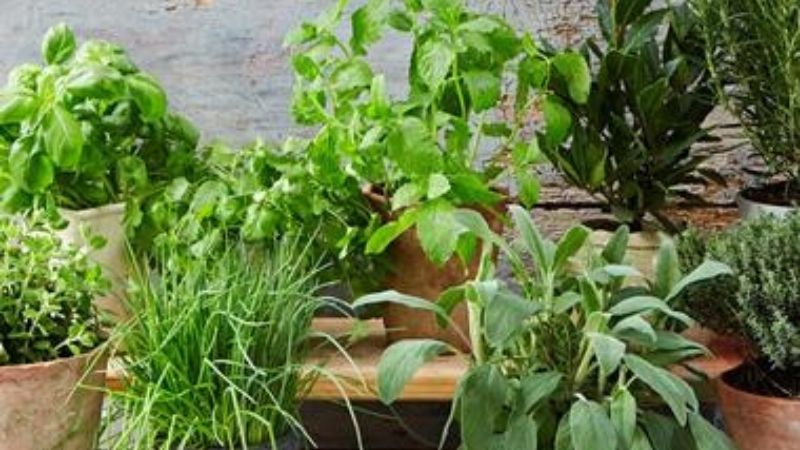
Gardening Projects To Do When You are at Home
When life presents you with unexpected challenges, it is an incredible opportunity to learn and grow. Gardening is one of the most rewarding hobbies for your well-being in that you have welcomed the task of nurturing life. If you embrace it and see it as the wonderful gift that it is, tending to your plants will add immeasurable value to your life for years to come. There are so many ways you can start caring for our green friends, and just a little can go a long way.
Repotting Your House Plants
House plants can thrive in the same pot for years, but that doesn’t mean you shouldn’t do what you can to ensure they are as healthy as possible. With proper care, your house can become an indoor oasis and your plants will grow larger and healthier than you thought possible. Consider repotting your house plant every 1-2 years so that it can receive more nutrients from fresh soil and potentially upgrade to a larger planter to give it more room to grow. A few signs that you may need to repot your house plant are if it has become top-heavy, mineral deposits are forming on the side of the pot, or if it hasn’t shown signs of growth for over 6 months. Be sure to water your plant thoroughly a couple days before you plan to repot and have lots of newspaper handy so you can move your house plant without making too big of a mess.
Shop All Soils and Fertilizers Online
Shop All Pots and Planters Online
Planting an Indoor or Outdoor Herb Garden
Herbs can thrive and grow indoors and outdoors, but will require more care if grown in your home. It is an inexpensive hobby that will add flair to your cooking and value to your life. The most important element is light. If placing your herbs indoors, be sure it is somewhere with ample light, and in pots with proper drainage. Herb pots should not be less than 6 inches so that they have plenty of room to grow. Another consideration that is often overlooked is the lifespan of your herbs and whether they are perennials or annuals. Perennials such as lavender, chamomile, sorrel, chives, mint, cilantro, sage, fennel, chives, lemon verbena, rosemary, parsley (biennial), oregano, and thyme will all return year after year for harvest. Annuals such as dill, basil, calendula, stevia, lemongrass, and flat-leaf and curly parsley are only good for one year. Mint, chives, and parsley are all easy herbs to start whereas oregano, rosemary, and cilantro will be a bit more of a challenge.
The Basics of Lawn Care
There are an endless list of activities you can do in your lawn to increase your quality of life. Mulching, mowing, weeding, raking, aerating, and fertilizing are all activities that decrease stress, boost curb appeal, and have the potential to reduce seasonal allergies.
Should I Rake my Lawn?
Raking is an often overlooked task that is more important than you may realize. Wet, soggy leaves can keep the grass from receiving the nutrients it needs and can also harbor pests and insects that can destroy your lawn. Mold spores build up beneath the dark and damp environment that can cause itchy eyes, runny nose, and other allergic reactions. Raking and then mowing your lawn is an excellent way to care for the health of your lawn and keep things looking healthy and fresh which can increase your overall satisfaction of your home environment.
Why is Weeding Important?
Weeds are another common culprit to unhealthy lawns and seasonal allergies. When you are so used to seeing weeds in your yard or garden, you tend to forget what’s really happening beneath the soil. They take water needed for the health of your lawn and their roots can overcrowd your other plants. Weeding is a chance for you to spend your alone time therapeutically and also take note of any issues within your garden that you may have previously overlooked.
Shop All Weed Control Products Online
Do I Need to Aerate My Lawn?
Aerating your lawn allows the soil to breathe and ensure that it gets the nutrients it needs. Perforating the soil gives your grass the opportunity to grow healthy and strong roots. Before you aerate, make sure your lawn is moist because it will make your work much more easy and enjoyable. Additionally, consider renting or borrowing a neighbor’s aeration machine before you make the investment.
When Should I Fertilize and Seed My Lawn?
Fertilizer is like steroids for grass; it helps jump-start their growth, promoting healthy roots. Lay the fertilizer between February and April when your grass is starting to grow. Grass season varies by climate therefore timing of laying grass seed is dependent on where you live. Fall is the best season for seeding in cold-season climates and spring is best for warm-season climates.
Shop All Soil and Fertilizer Products Online
Add Native Perennials to Your Garden
If you are a beginner gardener, start with Native Perennials to ensure easy care. Black-Eyed Susan, Purple Coneflower, and Echinachea are popular perennials with beautiful flowers that attract pollinators and butterflies. Pollinators are the unsung heroes that support our ecosystem and planting natives is one way to support their well-being.
